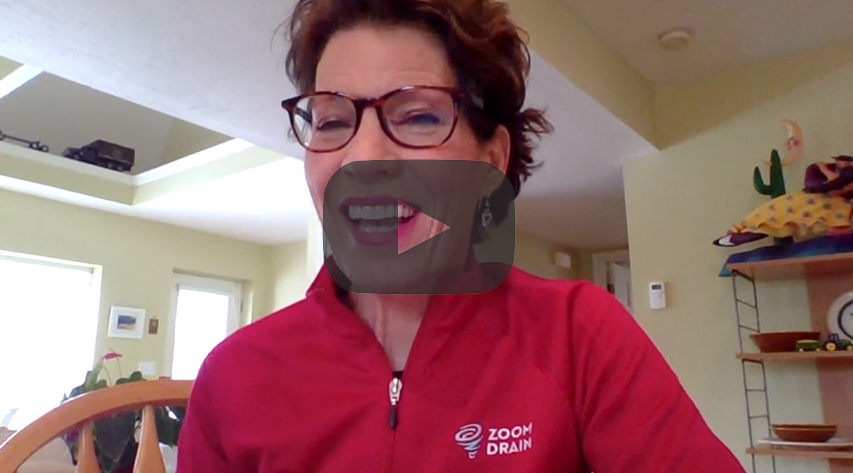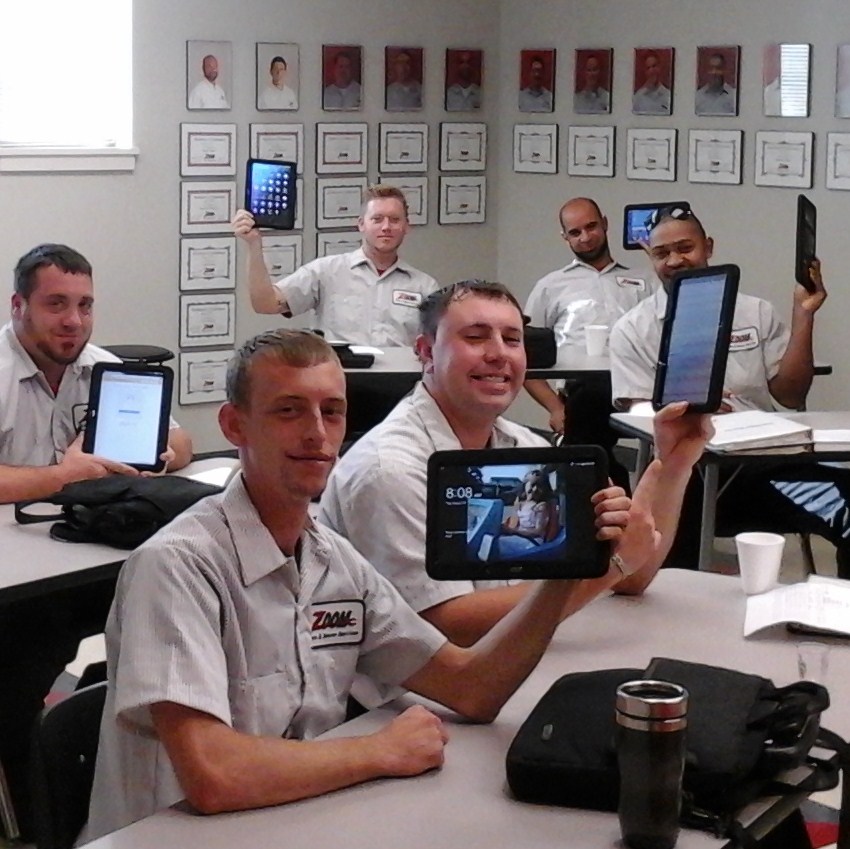Here’s a simple way to take the pulse of your company by reviewing a one page report:
![]() The Financial Quick Check (right click and save as…)
The Financial Quick Check (right click and save as…)
This powerful report is a weekly summary of the few numbers that make all the difference to the success of your business. Feel free to download and edit this file. Enjoy the benefits of knowing the score!
Jack Stack has had a huge influence on my business philosophy. He is one of the pioneers of open book management-sharing real financial information with team members. Click the link below to listen to our BlogTalkRadio show with Jack!

Read on for directions and inspiration for using the Financial Quick Check.
Financial Statements – The “Reader’s Digest” version
When I first learned how to read and use financial reports, I would assemble the information to show my partner and husband, Hot Rod, how we were doing. I’d cover his desk with pages and pages of financial reports. His eyes would glaze over.
One day he sighed and said, “I really hate this. I’m glad you know what this means, but I can’t take all this information. Can you just show me the few numbers that make all the difference in our company? Can you give me the “Reader’s Digest” version?” Hmmmm. Hot Rod was on to something
When it comes right down to it, there are only a few numbers that make all the difference. If there is a problem with one of the critical numbers, you can dig deeper and get more information. If you were to watch the critical numbers at your company, you would have a pretty good idea of what is going on. You would know for certain whether or not you are making money. You would know if you are going to have enough money to cover payroll.
Gail Gudell is a professional organizer and bookkeeper, par excellence! She is also my sister and in charge of Making Money at Bare Bones Biz. Gail started working with us many years ago, and is one of the reasons Hot Rod and I didn’t kill each other in our early years of working together. Gail and I sat down, determined to put the few numbers that make all the difference on a single sheet of paper. This is what we came up with. (Thanks, Gail!)
Financial Quick Check.
If your accounting program allows you to assemble a neat, consolidated report like this, that’s cool. However, we still recommend that you or your bookkeeper manually enter your financial information into the Financial Quick Check Form. That “manual moment” causes you to confront the data. It will help you stay at a KFP…a KNOWN Financial Position. You’ll be able to find and fix mistakes so much easier when you are checking the financial information on a weekly basis. And, the Quick Check will help you break out of denial, if denial is keeping you from charging the proper selling price.
We recommend filling out this form every week. Have it on your desk by noon on Monday for the previous week.
To complete the form, print your current balance sheet and income statement reports. Summarize the key numbers from those reports on the Financial Quick Check form.
Time Period
This form is set up to compare a period of time – we recommend filling this form out weekly – for the Month to Date and Year To Date totals. List the Budgeted information for the same period of time. Now you can compare actual performance to Budgeted Goals.
Note the percentage columns. Numbers vary from day to day and week to week. Percentages present a clearer picture of trends and performance. By tracking critical numbers as a percentage of sales, you can assess data from different time periods. This makes it easy to see if you are on track…or way off.
Ratios
The Cash Flow Ratio matches cash and accounts receivable against current accounts payable. If you have $20,000 in cash and $40,000 in accounts receivable, and $30,000 in accounts payable, your Cash Flow Ratio is…
$20,000 + $40,000 $60,000
_______________ = _______ = 2 to 1
$30,000 $30,000
In other words, for every dollar of bills you have to pay, you have two dollars in cash and accounts receivable to pay it with. This is helpful data! Keep in mind that if your accounts receivable are more than 60 days old, you probably won’t collect all of it. Recalculate this ratio using 30 days or younger accounts receivable to be conservative.
The beauty of knowing this ratio is it will motivate you to collect your Accounts Receivables. Also, stop the work-now-bill-later madness! A Collect On Delivery (COD) sales policy will dramatically improve this ratio…and your cash position.
Use the data to make decisions
The financial information tells you the score. The numbers tell you what is happening, but not why it is happening. If a dollar amount or a percentage is “off” investigate. It may be an accounting mistake. If not, look into what’s happening to cause that score. Then, figure out how to make it better.
Suppose sales are less than anticipated for this week. You could initiate a sales contest and offer performance awards to your sales team. You could call people on your customer list and offer a special product. And, you could hold off on buying that new coffee pot until next week. Make sense? Take action to increase sales and maintain profitability with the sales you have right now. You can act quickly because you are operating from a KFP.
Remember to think like a watermelon. If your sales amount is too skinny, it’s harder to make a profit. Get the top line where it needs to be. Certainly, you can look for ways to better manage expenses. Address the differences between Budget and actual performance throughout the company. However, understand the top line – sales – has to be big enough to cover all the costs of doing business, including reasonable compensation and benefits for you and your employees. Get the top line to Budgeted Goal level and lots of problems go away.
Customize for your company
Feel free to customize this form to best suit your company. You might want to create a form like this for each division at your company. You could customize a form like this to keep track of a big project. You could add numbers for callbacks, customer complaints, compliments…or safety violations. Keep it simple and real. Be consistent with your tracking.
Produce this report every week and you will sleep better every night. This is a vital part of your ongoing system for operating at a KFP.
Keep the most current copy of the Financial Quick Check in your Plan Binder under the Making Money section. You may choose to include a current Year to Date actual performance matched to Year to Date Budget version of this form in your Plan Binder, too. The Financial Quick Check is an easy way for you to keep score…and stay at a KFP. When you show your Plan Binder to your Board of Advisors, your investors, your bankers or your key employees, the Financial Quick Check makes it easy for them to see what’s happening at your company.
















